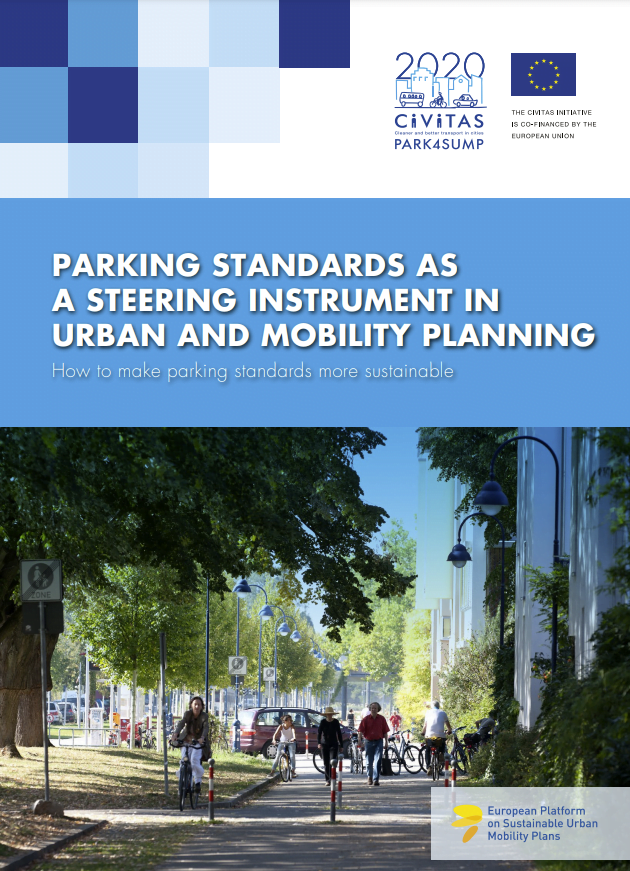New publication explains how to improve parking standards for sustainable mobility
The publication “Parking Standards as a steering instrument in urban and mobility planning”, explores how parking requirement in new urban neighbourhoods should be designed to reduce building costs while also promoting sustainable mobility. It is published as part of the European Horizon 2020 project Park4SUMP, a project exploring parking management across 15 European countries.
The focus of the paper is on how parking standards can be integrated as parking requirements for new developments. It examines new residential areas and mixed-use residential and commercial space districts, which is increasingly being deployed in new urban development projects.
Parking standards stipulate how many parking spaces for cars and bicycles must be built. The number can be based on multiple factors; such as the residential units, floor area, or the size of offices, retail and workplaces, as well as the intended uses.
Most European countries have so-called ‘minimum standards’ for car parking. This means that developers can build more than their mandatory share if desired. However, high requirements for fixed minimum standards affected construction and maintenance costs, created land-use conflicts and severe environmental problems.
Fixed maximum standards, on the other hand, limit the number of parking spaces that can be built in order not prevent an oversupply of parking spaces. This is intended to reduce costs and counteract the increase in car ownership and thus, in the long term, car traffic.
Approximately 80% of all trips begin and end at the home; therefore the availability of domestic parking is particularly relevant to the choice of transportation mode. In addition, parking - especially underground parking is a cost factor in residential construction and parking requires space, which reduces valuable land space and room for stay and play. If one's own car is the closest means of transport to the apartment, it is often the first choice. On top, it increases parking pressure at the destination as well: at workplaces, in shopping centres and at recreational facilities.
There are multiple good reasons to examine changing parking standards. The publication presents approaches used in various European countries, as well as good practice examples that highlight the importance of regulations on parking space construction as a steering instrument within urban and mobility planning.
In most European countries, parking policy determined by local legislation, within guidelines from national or regional governments. If parking requirements can be enacted on the local level, municipalities can explore better alternatives. For example, if the building project is located in an area with good public transport connections and/or sound mobility concepts are available, then less parking is required. Another possibility is setting a maximum number of parking spaces, - or parking space ceilings- for new buildings. This has been established in cities such as Zurich, which has the most advanced approach to maximum values for residential buildings, and central London, where the change from minimum to maximum numbers took place in 1976, before being extended to the whole city.
This multitude of approaches and experiences displays the importance of parking requirements as steering tools within urban and transportation planning! The integration of modified parking standards and parking space policy into the Sustainable Mobility Plan (SUMP) is highly recommended.
This article was written by Martina Hertel (Hertel@difu.de) from DIFU - a project partner of the Park4SUMP project (https://park4sump.eu/) who authored the publication together with Dr. Jürgen Gies (DIFU) and
Susan Tully (Edinburgh Napier University).


